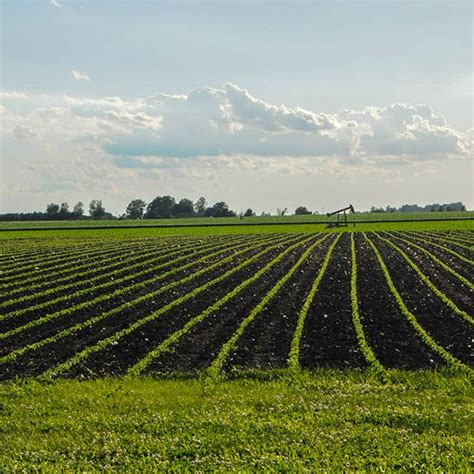Sherly
You need 4 min read
Post on Feb 03, 2025
Table of Contents

Inland Empire Farm and Garden: Your Guide to Growing in Southern California's Inland Empire
The Inland Empire, encompassing Riverside and San Bernardino counties, boasts a diverse climate perfect for a wide array of fruits, vegetables, and flowers. Whether you're a seasoned gardener or just starting out, understanding the unique characteristics of this region is key to success. This guide delves into the specifics of farming and gardening in the Inland Empire, covering everything from soil types and water management to pest control and seasonal planting.
Understanding the Inland Empire's Microclimates
The Inland Empire isn't a monolith; its climate varies significantly depending on elevation and proximity to mountains and valleys. Some areas experience hot, dry summers and mild winters, while others might have cooler temperatures and more rainfall. This microclimate diversity allows for a surprising range of gardening options. Knowing your specific location's climate is crucial for choosing the right plants. Consider factors like:
- Frost Dates: These dates define the period when temperatures fall below freezing, impacting the viability of frost-sensitive plants.
- Sunlight Exposure: The amount of sunlight your garden receives will dictate which plants thrive. South-facing slopes generally receive more sun.
- Rainfall: The Inland Empire receives relatively little rainfall, necessitating efficient irrigation strategies.
Soil Preparation: The Foundation of Success
The Inland Empire's soil can range from sandy loam to clay. Before planting anything, conducting a soil test is recommended. This test reveals your soil's pH, nutrient levels, and texture, allowing you to amend it accordingly. Common soil amendments include:
- Compost: Adds organic matter, improving drainage, aeration, and nutrient content.
- Vermiculite: Improves water retention and aeration.
- Perlite: Enhances drainage and aeration, especially in clay soils.
Improving soil structure is paramount for healthy plant growth. Consider using raised beds or containers if your soil is particularly challenging.
Water Management: Conserving a Precious Resource
Water conservation is crucial in the Inland Empire. Efficient irrigation techniques are essential, such as:
- Drip Irrigation: Delivers water directly to the plant's roots, minimizing evaporation.
- Soaker Hoses: Similar to drip irrigation, these hoses provide water slowly and directly to the roots.
- Mulching: Helps retain soil moisture and suppress weeds.
Regularly check soil moisture levels before watering to avoid overwatering. Overwatering can lead to root rot and other plant problems.
Choosing the Right Plants for Your Inland Empire Garden
The Inland Empire's climate supports a diverse range of plants. Consider these options based on your microclimate and personal preferences:
Fruits:
- Citrus: Oranges, lemons, grapefruits, and mandarins thrive in the Inland Empire's warm climate.
- Avocados: Certain varieties are well-suited to the region.
- Figs: A relatively low-maintenance fruit tree that produces abundantly.
- Grapes: Several grape varieties flourish in the Inland Empire, suitable for winemaking or table grapes.
Vegetables:
- Tomatoes: A staple in many Inland Empire gardens.
- Peppers: Both sweet and hot peppers thrive in the warm climate.
- Squash: Various types of squash, including zucchini and butternut squash, are successful choices.
- Beans: Bush beans and pole beans grow well in the region.
Flowers:
- California Poppies: A vibrant native flower that thrives in dry conditions.
- Lavender: A fragrant and drought-tolerant herb and flower.
- Sunflowers: A tall and showy flower that attracts pollinators.
- Roses: With proper care, roses can flourish in the Inland Empire.
Pest and Disease Control: Protecting Your Garden
Insects, diseases, and weeds can threaten your garden's health. Implementing preventative measures is crucial:
- Regular inspection: Early detection is key to effective pest and disease management.
- Beneficial insects: Introduce ladybugs and other beneficial insects to control pests naturally.
- Organic pest control: Utilize organic pesticides and methods when necessary.
- Weed control: Regular weeding prevents competition for resources.
Seasonal Planning: Timing is Everything
Understanding the growing seasons is essential for success. Research the appropriate planting times for your chosen plants. Consider using a frost protection method during the colder months to safeguard your delicate plants. Planning ahead guarantees a bountiful harvest.
Connecting with the Inland Empire Gardening Community
Join local gardening clubs and organizations to connect with fellow enthusiasts. Sharing knowledge and experiences can significantly enhance your gardening journey. Attend workshops, swap seeds, and learn from others to optimize your gardening practices within the Inland Empire.
By understanding the unique characteristics of the Inland Empire's climate and soil, and by implementing appropriate techniques, you can create a thriving farm or garden that brings you years of enjoyment and fresh produce. Remember, patience and continuous learning are key to success in any gardening endeavor.
Thanks for visiting this site! We hope you enjoyed this article.
